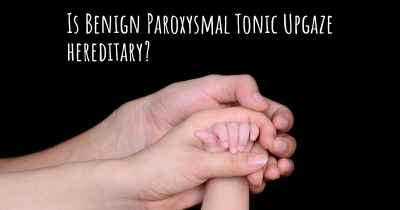What are the best treatments for Benign Paroxysmal Tonic Upgaze?
See the best treatments for Benign Paroxysmal Tonic Upgaze here

Treatments for Benign Paroxysmal Tonic Upgaze
Benign Paroxysmal Tonic Upgaze (BPTU) is a rare neurological disorder that primarily affects infants and young children. It is characterized by abnormal upward eye movements, with the eyes deviating upwards and remaining fixed in that position. While the exact cause of BPTU is unknown, it is believed to be a result of a dysfunction in the brainstem.
Although there is no specific cure for BPTU, there are several treatment options available to manage the symptoms and improve the quality of life for affected individuals. The choice of treatment depends on the severity of the condition and the individual's specific needs.
1. Observation and Monitoring
In mild cases of BPTU, where the upward eye movements do not significantly interfere with vision or daily activities, observation and monitoring may be the primary approach. Regular check-ups with a pediatric neurologist or ophthalmologist can help track the progression of the condition and ensure that no other underlying issues are present.
2. Medications
In some cases, medications may be prescribed to help manage the symptoms of BPTU. These medications primarily aim to reduce the frequency and severity of the upward eye movements. Antiepileptic drugs, such as carbamazepine or gabapentin, have shown some effectiveness in controlling the abnormal eye movements in certain individuals. However, the response to medication can vary, and it may require careful monitoring and adjustment of the dosage.
3. Physical Therapy
Physical therapy can play a crucial role in managing BPTU, especially in cases where associated motor or balance issues are present. A skilled physical therapist can design exercises and activities to improve coordination, balance, and overall motor skills. These therapies may include eye exercises, balance training, and coordination exercises to enhance the control of eye movements and reduce the severity of upward gaze deviation.
4. Assistive Devices
In severe cases of BPTU where the upward eye movements significantly impact vision and daily activities, the use of assistive devices may be beneficial. These devices can include prism glasses, which help align the visual field, or eye patches to temporarily block the upward gaze and improve functional vision. Assistive devices should be prescribed and fitted by an experienced ophthalmologist or optometrist.
5. Supportive Care
Providing a supportive and nurturing environment is essential for individuals with BPTU. This includes ensuring regular eye examinations, addressing any associated vision problems, and providing appropriate educational support. Collaborating with a multidisciplinary team, including pediatric neurologists, ophthalmologists, physical therapists, and educators, can help optimize the management and care for individuals with BPTU.
It is important to note that the effectiveness of treatments for BPTU can vary among individuals, and a tailored approach is necessary. Consulting with healthcare professionals who specialize in pediatric neurology and ophthalmology is crucial to determine the most suitable treatment plan for each individual.
Posted Jul 23, 2017 by Lorell 700








